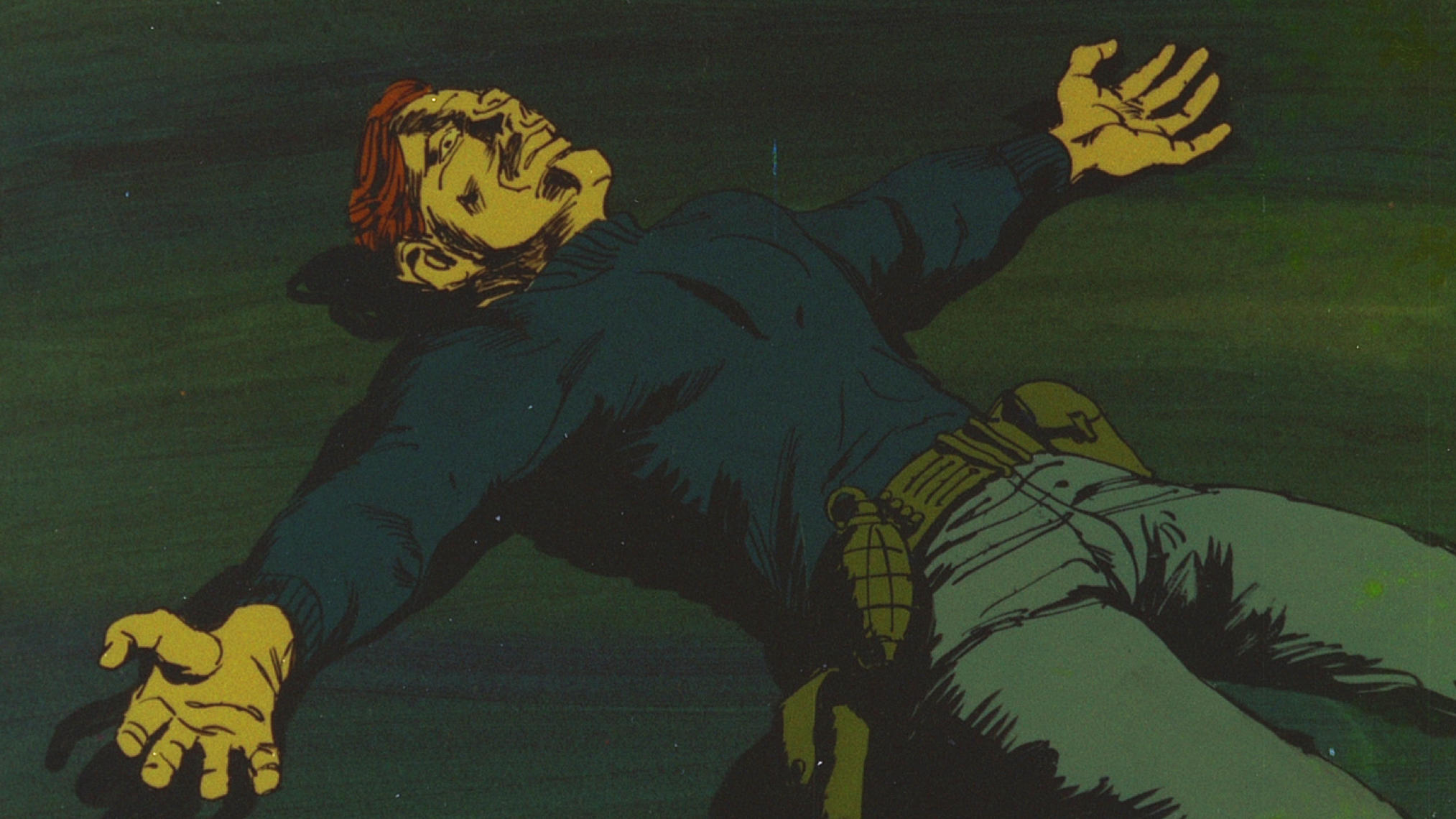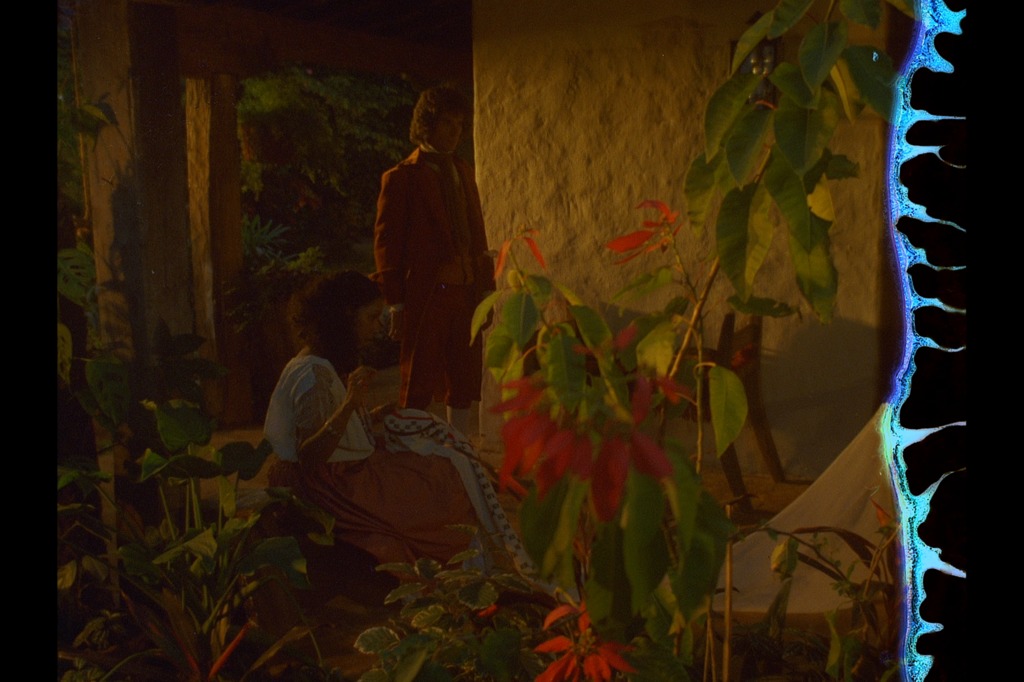 |
| From https://m.media-amazon.com/images/M/MV5BYWRlNGEzNDktYmE5ZC00ZTAyLTkzNzgtZj MxNTgzOGNhMzhlXkEyXkFqcGdeQXVyMjcwMDk2NjQ@._V1_.jpg |
a.k.a. La película infinita
Director: Leandro Listorti
Screenplay: Leandro Listorti
Synopsis: Director Leandro Listorti creates a film here
from others, the unfinished productions preserved at the film museum Pablo Hickens Ducros in Buenos Aires.
The resulting project combines the curious obsessions of a man over Leonardo Di
Vinci's drawings, an animated sci-fi film, softcore images, and even a previous
attempt at adapting the novel Zama from 1984.
 I wished The Endless Film had
been restructured. I will praise Listorti's
project as an inspired and worthy project that can continue in any form, all in
terms of rescuing unfinished film reels and allowing them to breathe in some
form. I think however just how this particular example was put together could've
been changed for the better.
I wished The Endless Film had
been restructured. I will praise Listorti's
project as an inspired and worthy project that can continue in any form, all in
terms of rescuing unfinished film reels and allowing them to breathe in some
form. I think however just how this particular example was put together could've
been changed for the better.
The devotion in the project
however is something to admire - even the original Argentinean title, a better one
frankly, suggests the really rewarding nature of this film as it translates not
to "Endless" but "Infinite", evoking new connotations of a
far vaster creation, one where there's no attempt to remix the original source
material, which can vary from outtakes to imagines without sound, scenes where
the clapper board is seen at the start or what remains. A series of
progressions are found as, innately with patience, plots are to be found as a
viewer will automatically try to make sense of the material, more so as it
comes off in structure as the most subtly made of anthology movies. This is
something Listorti could've used to
deal with that issue of mine I've going to mention, in terms of its structure
not being fully formed, in that he could've played off the anthology idea of separate
smaller stories but by way of these half-completed apocrypha.
A sense of much welcomed
weirdness is also to be found as a result even if not always in every fragment
used. One, in monochrome, follows a man fixated on Leonardo De Vinci's the Vitruvian
Man, drawing a circle on the floor at one point in the existing footage and
lying within it spread out. That footage abruptly leads to a figure locked in
upstairs in a bathtub, arms tied around their back, head jerking under the bag
over the head, the footage suddenly turning into a David Lynch film and thus becoming legitimately disturbing, a film
that would've been wonderful to witness in full form just to figure out where
it'd go. The animated sci-fi film, with a man with a fifties ray gun against
floral extras from Fantastic Planet
(1973), was a loss to cinema too in its charming limited animation and
vibrant colour, whilst the politically charged drama of a woman willingly
prostituting herself out becomes the most prolonged tale of the group,
beginning with her trying to find a missing figure only to end with her
assassinating a man in an archive with fish tanks. Poignantly, a first attempt
at adapting a novel Zama by Antonio di
Benedetto is also here, which was finally completed by the great director Lucrecia Martel. A mirroring is here, a
vibrant almost Technicolor ghost, where in the damaged film we effectively see
test shots where little happens, someone walking from one side to another
outside, and yet succeeds in effect.
 |
| From https://67d860664f4b00793cde-967809c7cbb0f14b111df13fc7 2409e5.ssl.cf3.rackcdn.com/fiona/editionfilm/39549b89-839a-4415-a740-c50142046cf6.jpg |
Sometimes it's even broader, a gag of a hit man passing off as the end member of a line of female divers in the midst of jumping into a pool, a couple of takes shown one after the other with him with gun wearing a black swimsuit and wig to match, or the idyllic scene of an older man painting his birdcage bright shocking pinking, the paint dripping onto the rural ground and rocks beneath. Sometimes there are merely little pieces with no explanation, including almost an intermission of technical diagrams and explicit nude photographs of women. The problem is that, again, this footage whilst great in itself isn't fully put together as a work with a clear structure, pacing even at less than an hour the real flaw alongside its tonal shift problems. If it had be reorganised, without even changing the material used in the slightest, than it would've been in the same ballpark as Guy Maddin and Evan Johnson's The Forbidden Room (2015), only not a séance of lost films remade onscreen but using the existing footage from various time periods.
And that's a shame as this type
of cinema exists already - Joe Dante's
six plus hour The Movie Orgy (1968) was
based on pop and trash culture but is also said to be structured both around
certain films and the notion of being like an all night binging of television
he grew with - so the precedent for an example which resurrects and makes use
for these forgotten projects has weight alongside a nobility to it that is even
more virtuous. The Endless Film as
it stands was still a rewarding experience, but its flaws are made more painful
knowing that, for me personally as a viewing, it's entirely just one aspect
(the structure of the footage itself) and nothing more which undermined the
finished work.
Abstract Spectrum: Dreamlike/Eerie/Odd
Abstract Rating (High/Medium/Low/None): None
Personal Opinion:
The Endless Film should be a project that exists in multiple types
per different countries. This Argentinean version certainly evokes a lot of its
history just through cinema - both the changing landscape but also bold
evocations their history such as with a discomforting propaganda film being
used, one which promotes the virtue of authoritarian rule and immediate evokes
the country's dark past. It's a shame that, feeling like a project that could
just do with a re-edit, the fullest potential just from what exists here
without more or any further tampering doesn't feel as fully evocative as its
little moments within it do. The result leaves it a fascinating experimental
work but a flawed one.
 |
| From https://www.berlinale-talents.de/bt/pf/000/278/278295_medium.jpg |
No comments:
Post a Comment